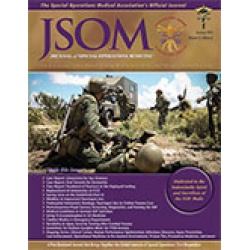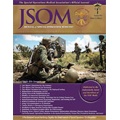Cinnarizine for Sea Sickness During a Remote Pacific Ocean Rescue Mission
Lyon RF, Rush SC, Roland T, Jethanamest D, Schawn CP, Kharod C 15(2). 1 - 6 (Case Reports)
Motion sickness can be a limiting factor for sea and air missions. We report the experience of a Pararescue (PJ) team on a Pacific Ocean rescue mission in which motion sickness was prevalent. Cinnarizine, an antagonist of H1-histamine receptors, was used to treat affected PJs. We also report findings of a survey of PJs regarding motion sickness. A family of four on a disabled sailboat 900 miles off the coast of Mexico sent out a distress call because their 1-year-old daughter became severely ill with fever and diarrhea. Four PJs were deployed on a C-130, performed a free-fall parachute insertion into the ocean, and boarded the sailboat. All four PJs experienced onset of motion sickness at some point during the early part of the mission and symptoms persisted through the first 24 hours. Three PJs experienced ongoing nausea, vomiting, dizziness, and sensory imbalances. The captain of the sailboat offered the three sick PJs approximately 18mg of cinnarizine two or three times a day with relief of symptoms and improvement on operational effectiveness. A new, anonymous, voluntary survey of Air National Guard PJs and combat rescue officers revealed that 78.4% of Operators have experienced motion sickness at sea. We discuss the current theories on motion sickness, the effect of motion sickness on operational effectiveness, and research on treatment of motion sickness, including the medication cinnarizine.


 Español
Español 




